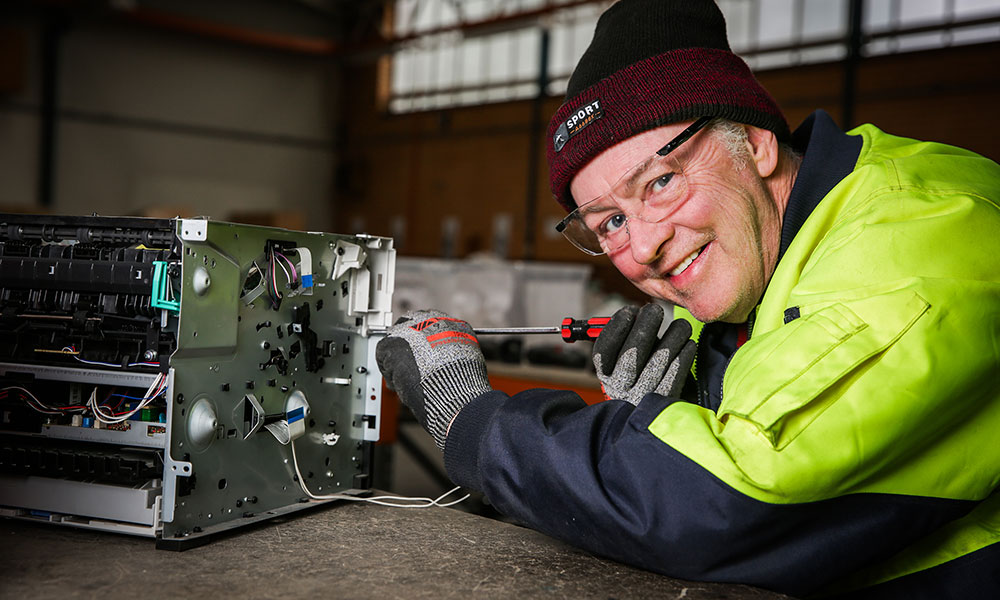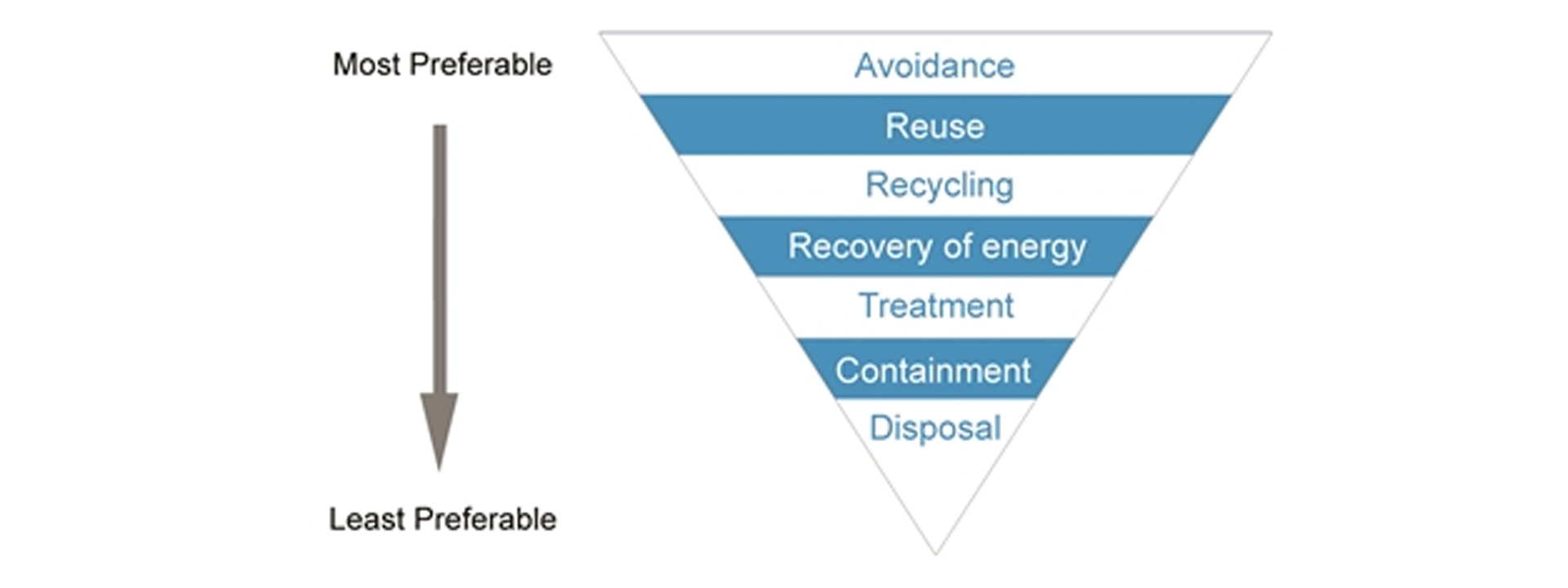How to minimise waste in your business

When was the last time you thought about waste management in your business? If you can’t remember, you’re not alone. Almost 50 per cent of small to medium sized businesses don’t keep any records of how much waste they produce. A survey conducted by the EPA shows that over 70 per cent of businesses think they’re doing enough to manage waste when, in reality, only 60% of commercial waste is being recycled.
Reducing waste can help minimise your business’s environmental impact, provide long term cost savings and earn goodwill from customers and clients. So where do you start?
Develop waste minimisation initiatives
Including waste minimisation in your company culture helps focus behavioural change in the workplace on waste minimisation initiatives such as a waste management plan or the introduction of recycling services.
By establishing a waste minimisation culture, you create an environment for bright ideas, increased efficiency and reduced operating costs. An open and inclusive culture will also contribute to staff morale as well as reduce your environmental impact.
Read: Cut your energy and water use and manage waste
Follow a waste management hierarchy

Following a waste management hierarchy can help you focus and prioritise your efforts. As shown in the diagram above, the hierarchy lists an order of preference for how waste should be managed, with avoidance being the most preferred option and disposal being the least.
EPA Victoria provides a set of guidelines aiming to reduce the amount of waste generated in Victoria and uses the waste hierarchy in conjunction with 10 environmental protection principals that can be used by your business.
Learn: How to design sustainable products
Steps to reduce waste or recycle
The first step to reducing waste in your business is to look in the bins to see exactly what you’re throwing away. Remind your staff of the importance of disposing of waste properly and erect signs in your workplace to spread awareness.
Use separate bins for different waste types. Segregating waste makes it easy to see how much is being wasted and also avoids contamination, making it easier to either reuse or recycle wasted material.
Practices to consider
- Establish a vision statement for waste minimisation at your business, including what you want to achieve and why
- Appoint a champion – yourself or an employee who is passionate and respected - to lead the culture change process. The role of the champion is a challenging one and should be recognised and rewarded.
Communicate your waste minimisation vision
Communication is a critical element in motivating staff to change. Communicate your waste minimisation vision, actions to be undertaken, roles and, most importantly, the positive results.
Be realistic about how long it might take to change attitudes and behaviours. Building a waste minimisation culture will take time but is the ingredient your business needs to achieve your waste reduction goals.
Also, don’t be shy about sharing your efforts with your customers and clients. One third of customers chose brands that do social or environmental good and two thirds are willing to pay more for sustainable goods.
Practices to consider
- Develop a detailed action plan that includes actions, targets, responsibility and timeframes
- Communicate the vision statement and action plan to all staff in a positive way, for example, at morning tea. Inform all staff that everyone has a role to play in improving waste practices.

Utilise existing waste minimisation services
You don’t have to reinvent the wheel when it comes to waste management. There are existing services that can help your business reduce its waste or dispose of it more responsibly.
For example, Melbourne business Reground provides single purpose wheelie bins to cafes into which they empty their spent coffee grounds. Reground collects the bins daily and delivers to their network of growers, community gardens and the iconic Melbourne Zoo for composting.
Enable IT Recycling delivers both environmental and social impact, accepting both working and non-working computer equipment from across Melbourne's metro region. Working equipment is re-deployed overseas to support world-wide access to technology through their registered and accredited recycling partners. Non-working equipment is channeled through their social enterprise to directly support work skills activities for local disadvantaged jobseekers whilst saving computer waste from landfill.
Reduce and improve packaging
For many businesses - especially retail, food and beverage industries - packaging can be a considerable cost. Look at reducing or redesigning packaging to use fewer materials or so packaging can be reused.
Ballarat Business, Ellen Burns’ energy bars, has started using home-compostable packaging made from cellulose derived from plants like eucalyptus and sugarcane.
Ellen says although the packaging she is using is more expensive than traditional packaging, her products are primarily being stocked in cafes and health food stores where she says there is a greater appetite for environmentally friendly products. Remember that one third of customers are willing to pay more for sustainable goods.
Good waste management starts with understanding the ‘real or true cost’ of material which ends up as waste. You need to factor in the energy used to process the material on site, the handling and storage costs associated with the waste materials and the purchase price of the unused materials.
Taking all of this into account, the real cost of waste to a business can be far greater than simply the cost of paying someone to take it away.
Visit Sustainability Victoria for more resources to help you reduce waste in your business.